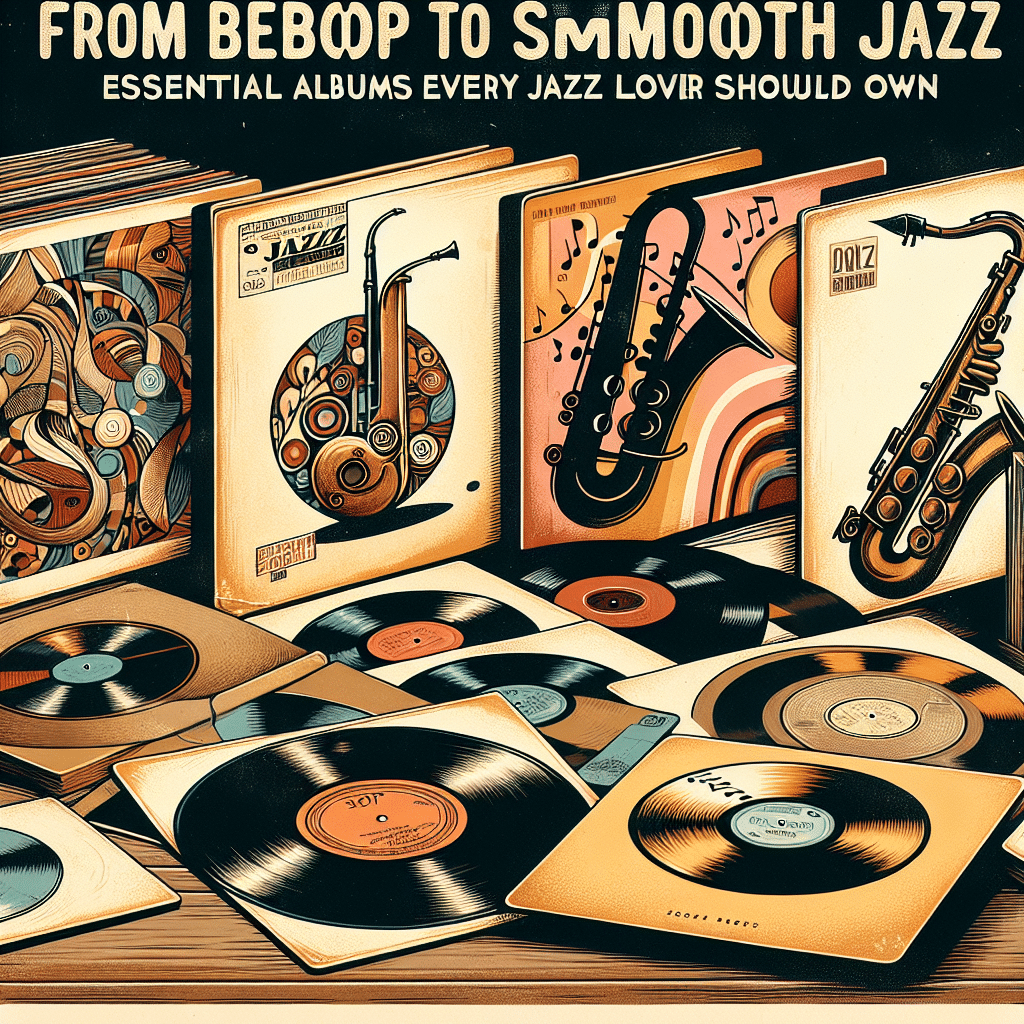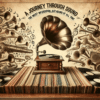From Bebop to Smooth Jazz: Essential Albums Every Jazz Lover Should Own

Jazz is a genre that has evolved dramatically through the decades, giving rise to a variety of styles that capture the imagination and the auditory senses of listeners around the globe. From the frenetic tempos and rich harmonies of bebop to the relaxing melodies and smooth rhythms of smooth jazz, the journey of jazz includes various essential albums that every enthusiast should own. In this article, we'll explore the must-have records that encapsulate the essence of jazz through its various phases and subgenres.
The Birth of Bebop: Jazz's Revolutionary Era
1. Charlie Parker - "Bird and Diz" (1952)
Bebop emerged in the 1940s, marking a profound shift from the orchestral arrangements of big band jazz to a more improvisational and smaller ensemble format. One of the cornerstones of this style is “Bird and Diz” featuring the legendary alto saxophonist Charlie Parker and trumpeter Dizzy Gillespie. The album highlights intense improvisation and complex chord progressions that became synonymous with bebop. Tracks like “Ornithology” remain timeless pieces that showcase Parker's innovative genius and Gillespie’s virtuosic trumpet skills.
2. Thelonious Monk - "Brilliance" (1956)
Thelonious Monk was another pivotal figure in the bebop era, shaping it with his distinct style and iconic compositions. The album "Brilliance," which features Monk's most famous pieces such as “Round Midnight” and “Blue Monk,” is a must-have for any jazz lover. Monk's unconventional approach to harmony and rhythm ensured his place as one of jazz's greatest pianists and composers.
See Also: Rhythm and Blues: Exploring the Heartbeat of Jazz Festivals Worldwide
Rhythm and Blues: Exploring the Heartbeat of Jazz Festivals WorldwideThe Golden Age of Hard Bop
3. Art Blakey & The Jazz Messengers - "Moanin'" (1958)
As bebop evolved into hard bop, the sound became richer and more grounded in blues and gospel influences. "Moanin'," released by Art Blakey & The Jazz Messengers, epitomizes this transition. With tracks like the title song “Moanin’,” this album showcases soulful rhythms and powerful solos. Dizzy Gillespie's influence is palpable, but it's Blakey's dynamic drumming and the ensemble’s collective sound that set this album apart.
4. Miles Davis - "Kind of Blue" (1959)
No jazz collection would be complete without Miles Davis's “Kind of Blue.” Often regarded as the best-selling jazz album of all time, this record introduced modal jazz, a departure from the fast-paced hard bop. Featuring eminent musicians like John Coltrane and Bill Evans, tracks like “So What” and “Freddie Freeloader” encapsulate quiet introspection with masterful improvisation, making it accessible to both new listeners and seasoned fans.
The Avant-Garde Movement: Experimentation in Jazz
5. John Coltrane - "A Love Supreme" (1965)
Marking a significant evolution in jazz, John Coltrane’s “A Love Supreme” is both a spiritual declaration and a musical masterpiece. This four-part suite reflects Coltrane's deep spirituality and innovative sound, melding improvisation with structured composition. Tracks like “Acknowledgment” and “Resolution” are essential, capturing the essence of both love and struggle in a modern context.
See Also: Melodic Escapes: Top Smooth Jazz Tracks to Relax and Rejuvenate
Melodic Escapes: Top Smooth Jazz Tracks to Relax and Rejuvenate6. Ornette Coleman - "The Shape of Jazz to Come" (1959)
Ornette Coleman challenged boundaries with his free jazz approach. "The Shape of Jazz to Come" epitomizes this audacious spirit, featuring tracks that forgo traditional harmony and structure. “Lonely Woman” stands out as a haunting piece that invites listeners into an explorative sonic landscape. This album is essential for understanding the progressive trajectory of jazz.
The Fusion Era: Blending Genres and Expanding Horizons
7. Weather Report - "Heavy Weather" (1977)
As jazz fusion began to rise in the 1970s, Weather Report was at the forefront. Their critically acclaimed album "Heavy Weather" features the popular track “Birdland,” merging jazz with rock, funk, and world music influences. This album encapsulates the genre-defying nature of fusion, showcasing innovative instrumentation and collaborative creativity.
8. Chick Corea - "Return to Forever" (1972)
Another jazz fusion hallmark, Chick Corea’s "Return to Forever" mixes Latin rhythms with avant-garde jazz elements. The title track is a transition between jazz conventions and electrifying improvisation, making it essential for any jazz collection. Corea’s piano work, combined with the ensemble’s synergy, highlights the diversity and richness of jazz.
See Also: Sax, Piano, and Beyond: A Definitive List of Classic Jazz Albums You Can't Miss
Sax, Piano, and Beyond: A Definitive List of Classic Jazz Albums You Can't MissThe Smooth Jazz Phenomenon
9. George Benson - "Breezin'" (1976)
Smooth jazz emerged in the late 1970s, providing a more accessible sound while maintaining jazz’s improvisational spirit. George Benson’s “Breezin’” is perhaps the quintessential smooth jazz album, featuring his signature guitar work and a laid-back feel. The title track and “This Masquerade” are smooth, polished pieces that mesmerize the listener, making them a staple on radio playlists.
10. Kenny G - "Breathless" (1992)
Kenny G's "Breathless" has left an indelible mark on the smooth jazz landscape. With its lush arrangements and romantic melodies, songs like “Forever in Love” exemplify the soothing qualities that smooth jazz delivers. Whether one appreciates G’s style or not, his influence on the genre's popularity cannot be overstated.
Conclusion: The Importance of Jazz Albums
From bebop to smooth jazz, these essential albums reflect the evolution of jazz as a genre and underscore its significance in the musical landscape. Each album captures a unique moment in jazz history, showcasing the creativity, emotional depth, and cultural impact of this art form. Owning these albums isn’t just about having a collection; it’s an appreciation of the influences and innovations that have shaped music, culture, and identity across generations. Jazz isn’t merely a genre; it’s an experience, an exploration, and a journey that invites us to listen deeper.
See Also: Jazz Revered: Exploring the Best Albums from the Genre’s Greats
Jazz Revered: Exploring the Best Albums from the Genre’s GreatsFAQs
What is bebop?
Bebop is a fast-paced and complex style of jazz that emerged in the 1940s, characterized by intricate melodies, harmonic sophistication, and innovative improvisation.
How does smooth jazz differ from traditional jazz?
Smooth jazz typically features a polished sound, often with a focus on melody and accessibility, drawing influence from both jazz and popular music. It usually has a laid-back feel compared to traditional jazz forms.
Why are the albums listed in this article significant?
The albums mentioned represent key turning points in jazz history and capture the essence of their respective subgenres, showcasing the creativity and evolution of jazz music.
See Also: A Journey Through Sound: The Most Influential Jazz Albums of All Time
A Journey Through Sound: The Most Influential Jazz Albums of All TimeWho are some other notable jazz musicians to explore?
In addition to those mentioned, other significant artists include Bill Evans, Ella Fitzgerald, Duke Ellington, and Herbie Hancock. Each has made substantial contributions to the genre worth exploring.
If you want to know other articles similar to From Bebop to Smooth Jazz: Essential Albums Every Jazz Lover Should Own you can visit the category Jazz.
